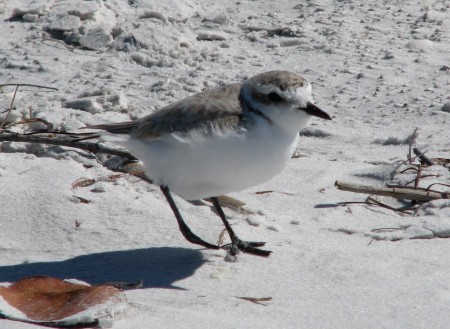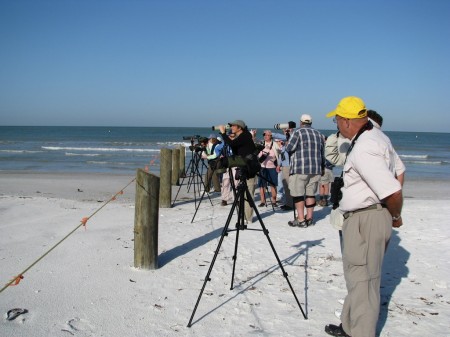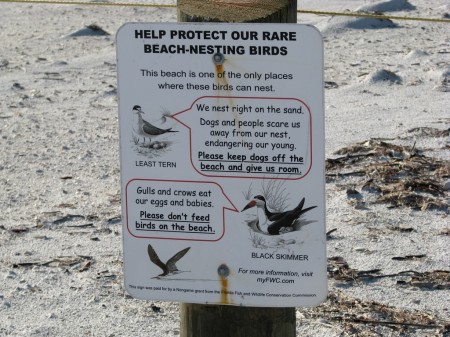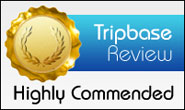
A snowy plover on a Florida Gulf Coast beach. This one happens to be enjoying the beach at Fort Desoto Park in Pinellas County.
Most of us enjoy watching the birds at the beach. But few of us pay much attention to what the birds are actually DOING at the beach. Looking for a handout, we assume.
Some species of birds actually lay their eggs right out on the beach. In the sand. In full sun. Sounds stupid, doesn’t it?
But you have to remember that these birds developed their successful nesting techniques long before humans decided that the beach was a playground. Now, we’ve taken over their prime nesting locations with beach umbrellas, towels, frisbees, footballs, lounge chairs, dogs and screaming children running all over.
The snowy plover has not fared so well. Conservation-minded people are trying to help the few remaining nesting pairs of snowy plovers have the space they need to hatch their eggs. Unfortunately, nesting season coincides with beach season.
A recent article in the Pelican Press focuses on the controversy surrounding beach access #7 on Siesta Key.
It seems that five pairs of snowy plovers have chosen access #7 as a nesting location, producing conflicts, including:
- The access is closed to human foot traffic during nesting season.
- Sarasota County has purchased properties adjacent to access #7 and wants to add additional (and much needed) beach parking space.
- Snowy plovers are not a common species, so a nesting pair attracts birders from all over who “flock” to the area to see the birds, bringing much appreciated revenue to the island (yes, ecotourism), but adding to the crowds that could interfere with the bird nesting.
Apparently, closing the access during nesting season and having volunteers educate the public about the sensitive nesting area paid off. According to the article:
A biologist, Michelle van Deventer had documented the fact that no snowy plover chicks had survived in the 2009 nesting season, primarily because of human disruptions. As a result of the closure to walk-through traffic at Access 7 this year, she said, seven chicks made it to the fledgling stage, from five nests. (emphasis mine)
“That has the attention of a lot of biologists in the state.” Michelle added, “The closing of Access 7 worked the magic.”
Dollars from birders add up fast. They spend money on hotels, restaurants, plane tickets, attractions, etc. According to biologist Michelle van Deventer:
“Other than the Panhandle, Sarasota County is the only area on Florida’s west coast to have documented breeding pairs of the snowy plovers.”
But the irony of the situation was not lost on Sarasota County Commisioner Nora Patterson who commented:
“Do you realize the contradiction of what you’re saying: ‘This is a valuable economic site because it can bring ecotourists in to look at the birds, but we really don’t want the people there because the people will run off the birds.’ Ecotourists will probably come by car, and they’ll probably want someplace to park.”

Birders respecting the sensitive areas by staying outside of the roped-off nesting area and observing birds from a distance with binoculars and spotting scopes.
This local conflict is emblematic of what is going on statewide. As more and more people come to Florida, natural areas shrink, resulting in fewer and fewer places where we can all go to “get away from it all.” Soon, there will be no where to go where you won’t run into throngs of people whose very love of the place destroys it by the sheer weight of their presence.



